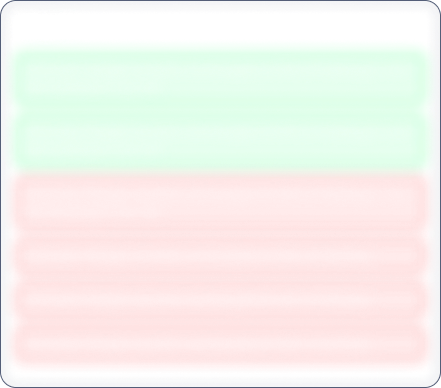Year End Sale 50% off
Rhetan TMT

No Data Available
Investor Sentiment
Rhetan TMT Share price and Fundamental Analysis
Key Metrics
Included In
Stock Returns
Stock Heatmap

No Stocks
Smart Score

Unlock Smart Score
See Detailed Analysis & Insights


Unlock Insights
See Detailed Analysis & Insights
Technicals
Returns Calculator
If you would have investedResearch Report
No Research Report
Corporate Action
Financials
Key Ratios
ROE
Avg ROE (3 Yrs) : NaN%
ROCE
Avg ROCE (3 Yrs) : NaN%
ROA
Avg ROA (3 Yrs) : NaN%
NPM
Avg NPM (3 Yrs) : NaN%
Dividend History
5 Year FactSheet
Documents

No Data Available
News
Rhetan TMT Management and History
Company Management


Unlock Management Data
See Detailed Analysis & Insights
Company History
Shivani Rolling Mills Private Limited was incorporated on June 26, 1984 with the Registrar of Companies, Gujarat. Further name of the Company was changed from 'Shivani Rolling Mills Private Limited' to 'Shree Ghantakarna Rolling Mills Private Limited' vide Special resolution dated December 27, 1996. Further, name of the company was changed from Shree Ghantakarna Rolling Mills Private Limited to Rhetan Rolling Mills Private Limited vide Special Resolution dated August 29, 2018. Further name of the Company was changed from Rhetan Rolling Mills Private Limited to Rhetan TMT Private Limited vide Special Resolution dated December 31, 2021. The status of the Company was changed to Public Limited and name of the Company was changed to Rhetan TMT Limited vide Special Resolution dated January 10, 2022.
Being promoted by Mr. Shalin Shah, the Company owns and operates a Steel Rolling Mill with an aggregate installed capacity of 30,000 MTPA. It is an IS 1786: 2008 certified company and manufactures TMT Bars and Round Bars which are primarily used in construction industry. Its products have been used in construction of dams, bridges, residential and commercial towers and major infrastructure projects in Gujarat. The plant is located at Mehsana, in Gujarat.
In 1986, the Company commenced production of TMT bars at Manufacturing facility at Kadi, Dist. Mehsana in Gujarat.
In 2001, the Plant was closed down due to internal financial constrain as well as unfavorable market conditions.
In 2002, electricity connection was discontinued at the factory site due to non-payment of dues.
In 2017, Company applied to the UGVCL/ Industries' Commissioner to re-consider it for eligibility under the Scheme.
Later in 2018, Company availed low-tension (LT) load of 13.33 KVA from Uttar Gujarat Vij Company Ltd (UGVCL) for carrying out modernization and overhauling of existing Plant and Machinery and for installation of new machinery at the factory site. It again availed high-tension (HT) load of 1500 KVA from Uttar Gujarat Vij Company Ltd (UGVCL) for Manufacturing.
In 2019, it re-commenced commercial production of TMT bars. The plant is fully geared with latest technologies to provide good quality steel products and is operating smoothly since 2019.
Rhetan TMT Share Price
Rhetan TMT share price reflects investor sentiment toward the company and is impacted by various factors such as financial performance, market trends, and economic conditions. Share price is an indicator which shows the current value of the company's shares at which buyers or sellers can transact.
Rhetan TMT Market Cap
Market capitalization of Rhetan TMT indicates the total value of its outstanding shares. Marketcap is calculated by multiplying share price and outstanding shares of the company. It is a helpful metric for assessing the company's size and market Valuation. It also helps investors understand how Rhetan TMT is valued compared to its competitors.
Rhetan TMT PE Ratio
Rhetan TMT PE ratio helps investors understand what is the market value of each stock compared to Rhetan TMT 's earnings. A PE ratio higher than the average industry PE could indicate an overvaluation of the stock, whereas a lower PE compared to the average industry PE could indicate an undervaluation.
Rhetan TMT PEG Ratio
The PEG ratio of Rhetan TMT evaluates its PE ratio in relation to its growth rate. A PEG ratio of 1 indicates a fair value, a PEG ratio of less than 1 indicates undervaluation, and a PEG ratio of more than 1 indicates overvaluation.
Rhetan TMT ROE (Return on Equity)
Return on Equity (ROE) measures how effectively Rhetan TMT generates profit from shareholders' equity. A higher ROE of more than 20% indicates better financial performance in terms of profitability.
Rhetan TMT ROCE (Return on Capital Employed)
Return on Capital Employed (ROCE) evaluates the profitability of Rhetan TMT in relation to its capital employed. In simple terms, ROCE provides insight to investors as to how well the company is utilizing the capital deployed. A high ROCE of more than 20% shows that the business is making profitable use of its capital.
Rhetan TMT Total Debt
Total debt of Rhetan TMT shows how much the company owes to either banks or individual creditors. In simple terms, this is the amount the company has to repay. Total debt can be a very useful metric to show the financial health of the company. Total debt more than equity is considered to be a bad sign.
Rhetan TMT Debt to Equity Ratio
The Debt-to-Equity (DE) ratio of Rhetan TMT compares its total debt to shareholders' equity. A higher Debt to Equity ratio could indicate higher financial risk, while a lower ratio suggests that the company is managing its debt efficiently.
Rhetan TMT CAGR (Compound Annual Growth Rate)
CAGR shows the consistent growth rate of Rhetan TMT over a specific period, whether it is over a month, a year, or 10 years. It is a key metric to evaluate the company’s long-term growth potential. Main metrics for which CAGR is calculated are net sales, net profit, operating profit, and stock returns.
Rhetan TMT Technical Analysis
Technical analysis of Rhetan TMT helps investors get an insight into when they can enter or exit the stock. Key components of Rhetan TMT Technical Analysis include:
Support Levels (S1, S2, S3)
There are usually multiple support levels, but the main support levels for a stock are S1, S2, S3. Support levels indicate price points where stock might get support from buyers, helping the stock stop falling and rise.
Resistance Levels (R1, R2, R3)
There are usually multiple resistance levels, but the main resistance levels for a stock are R1, R2, R3. Resistance levels represent price points where Rhetan TMT shares often struggle to rise above due to selling pressure.
Rhetan TMT Dividends
Dividends refer to the portion of the company’s profits distributed to its shareholders. Dividends are typically paid out in cash and reflect Rhetan TMT ’s financial health and profitability.
Rhetan TMT Bonus Shares
Bonus shares are usually given by companies to make the stock more affordable, increase liquidity, boost investor confidence, and more.
Rhetan TMT Stock Split
Stock split increases the number of its outstanding shares by dividing each existing share into multiple shares. When the company offers a stock split, the face value of the stock reduces in the same proportion as the split ratio.
Rhetan TMT Financials
The financials of Rhetan TMT provide a complete view to investors about its net sales, net profit, operating profits, expenses, and overall financial health. Investors can analyze financial data to assess the company’s stability and also understand how the company has been growing financially.
Rhetan TMT Profit and Loss Statements
The profit and loss statement of Rhetan TMT highlights its net sales, net profit, total expenditure, and operating profits in the current financial year. This Profit and Loss statement is crucial for evaluating the profitability and financial stability of Rhetan TMT .
Rhetan TMT Balance Sheet
The balance sheet presents a snapshot of Rhetan TMT ’s assets, liabilities, and equity of shareholders, providing insights into the financials of the company.
Rhetan TMT Cashflow Statements
Cashflow statements track the company's cash inflows and outflows over a period. It is an essential tool for understanding how well the company manages its liquidity and finances.


